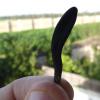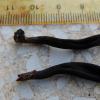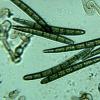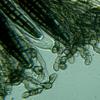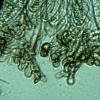
15-12-2025 15:48
 Danny Newman
Danny Newman
Melanospora cf. lagenaria on old, rotting, fallen

15-12-2025 15:54
 Johan Boonefaes
Johan Boonefaes
Unknown anamorph found on the ground in coastal sa

15-12-2025 21:11
 Hardware Tony
Hardware Tony
Small clavate hairs, negative croziers and IKI bb

15-12-2025 07:09
 Danny Newman
Danny Newman
indet. Rutstroemiaceae sp. on unk. fallen leavesMc

15-12-2025 07:05
 Danny Newman
Danny Newman
Pseudosclerococcum golindoi (det: Zotto)near Cosb

15-12-2025 11:49
 Danny Newman
Danny Newman
ITS sequences from the following two collections B

15-12-2025 12:34
 Danny Newman
Danny Newman
indet. Rhytismataceae on oak leafnear Purchase Roa

09-12-2025 12:06
 Andgelo Mombert
Andgelo Mombert
Bonjour,Je recherche l'article concernant Hypobryo
Geoglossum sp?
Godorova Olga,
09-02-2013 12:59
 Hallo, dear friends.
Hallo, dear friends.My name is Olga and I'm an amateur mycologist from Israel. Yesterday I found in a Pine forest an interesting ascomycete, that seems to be some Geoglossum species. The mushrooms grew on the ground together with Helvella leucomelaena, which is quite common in our Pine forests in Spring. The size of the fruiting bodies was about 3-3,5 cm high, 0,2-0,5 cm wide, the surface is matted, a bit rough, the color is dark brown-black, the stem area is brighter, brown-grey.
The spores 7-septated, long and narrow, about 90-102*7-8 µ, the asci 8-spored, as I could see, about 200-250*25-30 µ. The paraphyses look a bit strange to me, because their form is very irregular and I don't know, how to describe it exactly.
I looked for some information in the internet and found a description, that could fit, in a book "Mushrooms of Northeastern North America": "Spores 50-105*7-9, mostly 7-septate, upper cells of paraphyses enlarged and rounded to obvoid." - it is a descriprion of Geoglossum glabrum. But I am still not sure about the definition.
I'll be glad for your help.
Have a good day
Olga
PS: I searched other topics related to Geoglossum here on this Forum, and I think, that the microscopy of this species (which was identified as Geoglossum ccookenianum) looks similar: http://www.ascofrance.com/search_forum/9944
but in my case the spores are bigger in size.
DirkW,
09-02-2013 13:29
Godorova Olga,
09-02-2013 13:59

Re : Geoglossum sp?
Thank you very much, Dirk! Yes, the paraphyses form on the picture is similar to what I have. I'll try to find more information about this species.
Olga
Olga


